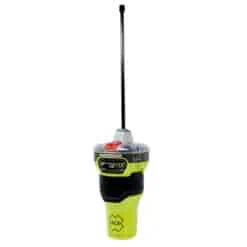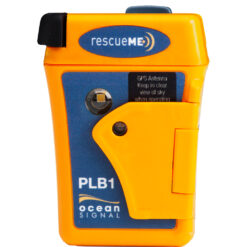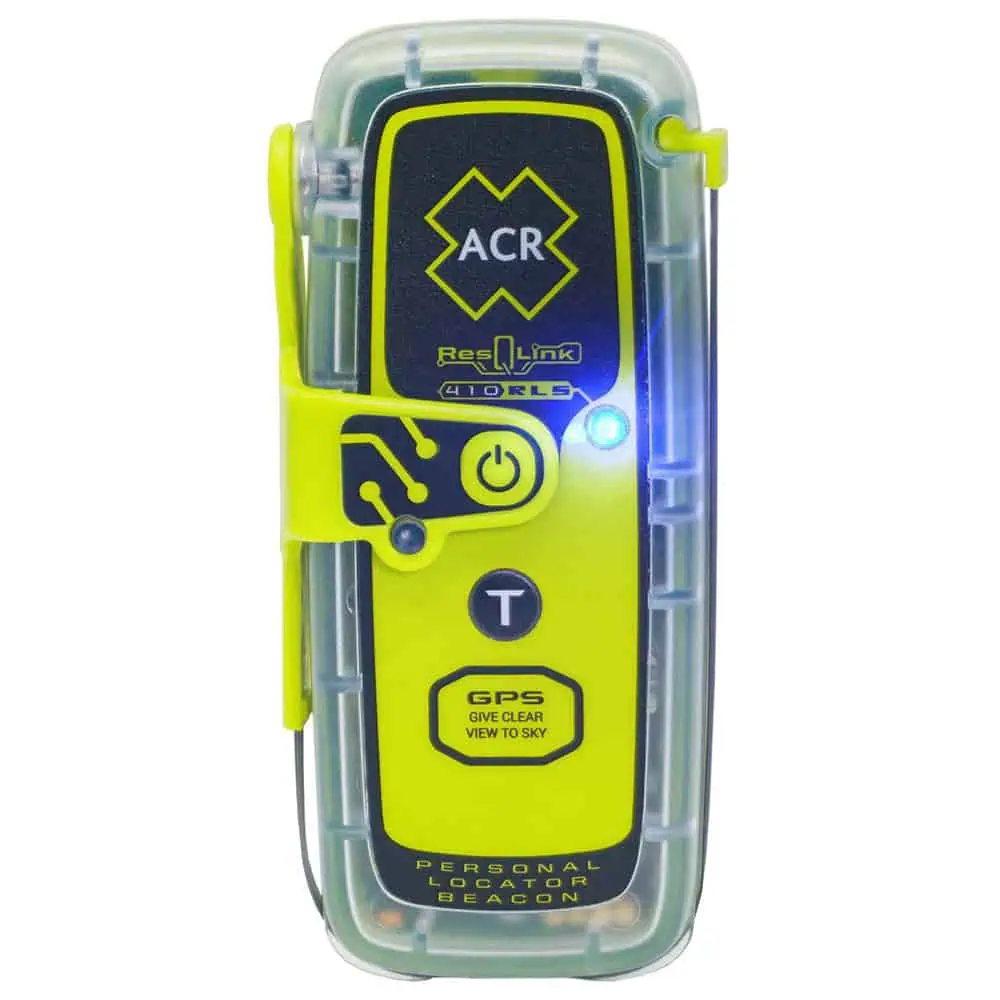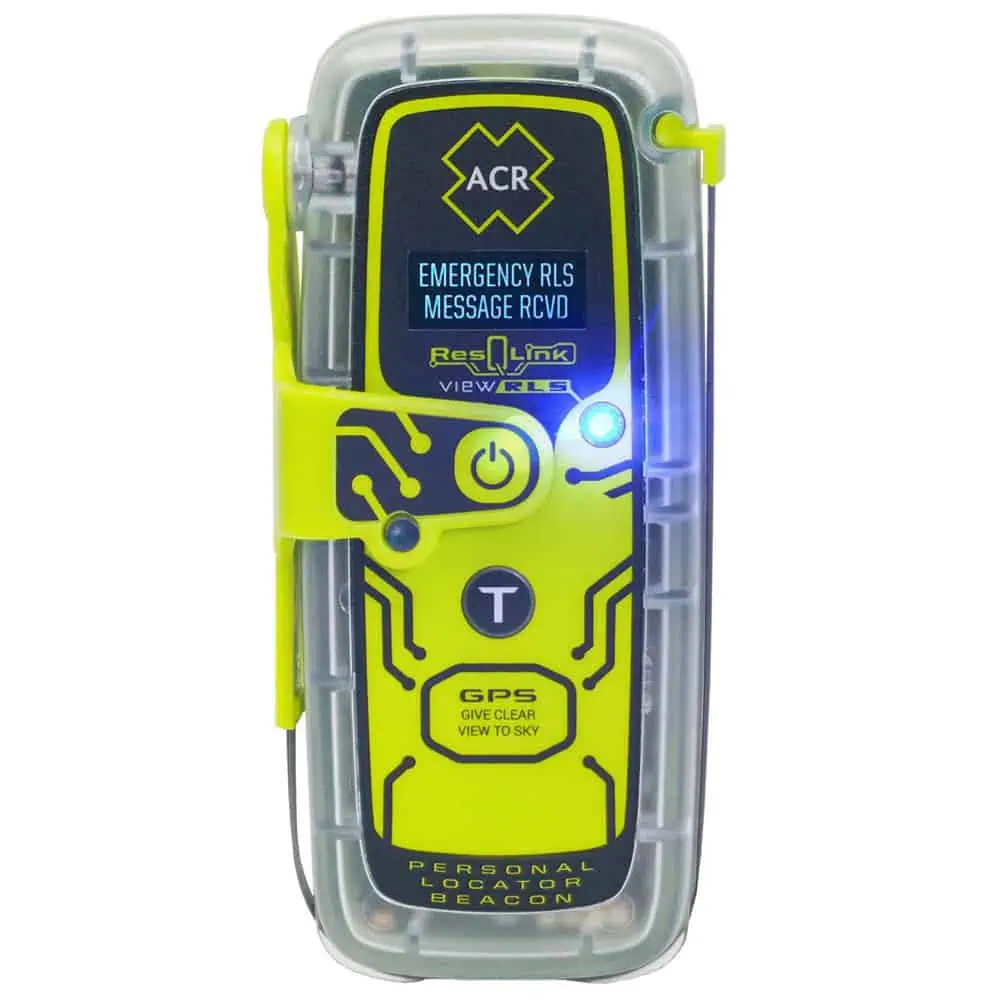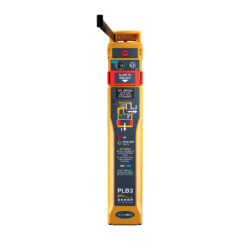Orders placed after 3PM Thursday 17th April 2025 will be processed and packed over the Easter break, but will not be collected by the courier until Tuesday 22nd April 2025 (Click HERE for more information).
The Ultimate Guide to Safety Beacons (PLBs, EPIRBs & AIS Beacons)
Emergency location beacons are fast becoming essential items of safety equipment that everyone should have on board. The cost of these devices has fallen dramatically over the last few years, so now is a great time to add some peace of mind to your next adventure. With such a vast range of models on the market, however, which is the right one for you?
See our guide below for the different types of safety beacons available and which is best for your needs.
What are the different types of safety beacon?
There are three types of emergency location beacon but each have different applications and requirements for use. These are:
1. Emergency Position Indicating Radio Beacon (EPIRB)
2. Personal Locator Beacon (PLB)
3. Automatic Identification System Beacon (AIS)
What is an EPIRB?
An Emergency Position Indicating Radio Beacon, or EPIRB is a device carried on a vessel which can alert Search and Rescue to your location in the event of an emergency. EPIRBs are registered to your vessel.
What frequencies do EPIRBs transmit on?
EPIRBs send a coded message via the 406 MHz distress frequency which is relayed via satellites to Search and Rescue, giving the beacon worldwide cover.
The majority of the device’s we sell have built in GPS receivers which send out your position as well. This then gives a location accuracy of under 100m. In addition EPIRB’s utilise a 121.5 MHz homing beacon. Rescuers use this when they are in the right area to pinpoint your exact location.
Recently we have seen the introduction of an EPIRB with a built in AIS (Automatic Identification System) beacon. The Ocean Signal EPIRB3 when activated, sends out the normal message on the 406 MHz freqency as well as an AIS message to AIS equipped vessels within range. This increases and rapidly speeds up your chance of rescue if there is help within range.



What is a PLB?
PLB stands for Personal Location Beacon. It is a device that can be used in life or death emergency situations to alert Search and Rescue services to the location of an individual.
Once activated it sends a message via the 406 MHz distress frequency which is relayed via satellites to Search and Rescue. This gives the beacon worldwide cover.
All PLBs that we sell have built in GPS receivers which send out your position encoded into the 406 MHz frequency. This then gives a location accuracy of under 100m.
An additional built in 121.5 MHz homing beacon is standard with a PLB meaning rescuers use this when they are in the right area to pinpoint your exact location.
Who uses a Personal Locator Beacon?
There are many activities where having a PLB is useful, and not just on the water. As PLBs are programmed to the individual they are ideal for crew members that regularly move between vessels. Solo sailors would also benefit from having a PLB on them at all times.
PLBs are also ideal for a multitude of onshore / land based activities. For example as an emergency beacon for hikers or if you are in a location with no mobile phone reception.
The aviation industry has also adopted the use of Personal Locator Beacons for anyone flying light aircraft.

OFF


OFF


OFF

OFF

EPIRB Vs PLB: What’s the Difference between a PLB and EPIRB?
|
PLB |
EPIRB |
|
| Registration | Registered to an individual and therefore smaller – good for those who move between vessels or partake in land-based activities | Registered to a vessel – mandatory in all commercial vessels and commonly used on leisure boats and yachts |
| Application | Can be used on land as well as at sea | Used only at sea |
| Activation | Manual activation by the individual | Manual or automatic activation (following water submergence) |
| Transmission Duration | A minimum of 24 hours (as long as battery is in date) | At least 48 hours |
| Floatation | Not all float and may require additional floatation support | All devices float |
What is an AIS Beacon?
An Automatic Identification System (AIS) is an automatic tracking system originally designed for vessels to aid in collision avoidance. Now the same technology has been adapted to be carried by individual crew members to help in ‘man over board‘ (MOB) situations. Because of this, you might often hear them referred to as AIS Man Overboard (MOB) devices.
An AIS beacon, once activated, transmits an MOB message to AIS equipped vessels within range (approx. 4-5 miles). A built in GPS receiver ensures that your exact location is sent.
This is then displayed on a chart plotter or other screens that have an AIS interface as an MOB icon.
Most AIS beacons are designed to be fitted inside a lifejacket and will activate automatically upon inflation.


Should I buy an AIS beacon or PLB?
We are often asked this question and is hard to answer. This is primarily because the two devices have a very different purpose. AIS beacons are primarily designed for MOB rescue, whilst PLBs alert the emergency services to a life or death situation.
In a ‘man overboard situation’ the first thing to consider is who is most likely to rescue you? The best chance of rescue is usually from your own vessel. An AIS beacon would be more suited for this situation, as it will alert your own boat or boats within range.
Single handed sailors would probably benefit more from a PLB to contact the emergency services, especially if there are no other vessels within range.
Also, if you want to be able to see AIS MOB on your vessel you will need to have an AIS system on board.
Neither device has a subscription fee, although you are required to register the PLB with your local authority.
Or, why not have both combined in one!?
Ocean Signal have launched the world’s FIRST Personal Locator Beacon to include AIS.
The merging of 406 MHz and AIS distress messaging effectively pairs both global and local rescue, thereby maximizing access to the most effective rescue resources available. In addition, NFC capability provides users with the world’s first smartphone connected PLB and the all-new Return Link Service feature provides users with the comfort in knowing that their distress message has been received and their location detected by worldwide Search and Rescue personnel.






